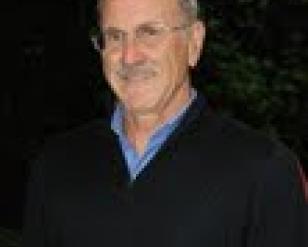Each year as we begin to prepare our classes, most of us think "How can I engage students more?" or "What can I do to make this subject matter more meaningful and relevant to my students and the community?" And some of us are no doubt thinking, "How can I get through this semester with my own brain intact and engaged?"
At the same time the general public and legislators are asking "Why aren't universities more responsive to the pressing needs of the community?" Indeed, in contrast with earlier times when higher education was seen as a public good benefiting the State, today higher education is seen as a private benefit to those who attend college with an attendant rise in the student's share of costs from 20% in 1980 to 36% in 2008.
Today there are nearly 4,300 degree-granting institutions serving nearly 20 million people. Service, according to the authors is at the heart of the University's mission; all topics, problems, and issues of the world should be investigated. Every opportunity for engagement is likewise an opportunity for learning and understanding both for faculty and students. Keeping knowledge within the University makes little sense; knowledge should be broadly generated and broadly shared. Increasingly, the amount and quality of community engagement will be criteria for evaluating what we do.
What is to be done? "Becoming an Engaged Campus" seeks to answer that question by focusing on building better ties and connections between campus and the community. We need better approaches for acquiring and disseminating knowledge. Fortunately, we in the CSU have taken on this responsibility.
The central concept in the book is that of alignment; how to line up the campus vision, mission and values in support of community service. Each of the succeeding chapters amplifies on this then indicting how organizing, student services and so on can be focused on community service. Part of this involves recruiting faculty who are committed to community engagement and providing them with the resources to do so.
One of the challenges I have found over the years I have taught at Sonoma State University is that of finding time for meaningful engagement. However, once I made the decision to put community service as a priority, I found the rewards of working with others in non-profits and community groups far outweighed the sacrifices in terms of time spent. In addition, the academic benefits came along as I began to write about my experiences and what I had learned. Moreover, my experiences working to develop the Sustainable Enterprise Conference series and applying my business knowledge to developing a school management curriculum in Brazil provided rich non-textbook material for the classroom. I found I could speak about my personal experiences with a passion and energy that engaged my students. [Well, to be honest, I need to qualify that by saying many of my students.]
We at Sonoma State University are indeed fortunate to have a group of colleagues who value community engagement and have developed a wide range of activities. A few things that come to mind are the Wine Business Program, our excellent music and performing arts programs, faculty who go into prisons to teach, our War and Peace and Holocaust lecture series to name just a few. The question that we face is how to extend and infuse this to a greater degree. Certainly not every course on Shakespeare or chemistry need to be infused with service-learning. But as Lee Shulman notes in his preface, "Universities too should be models of conceptual, practical and socially responsible ideas and actions." This guidebook may be of some help to University leaders as we move forward.
Becoming an Engaged Campus. Carole A. Beere et.al. Jossey Bass. 2011

